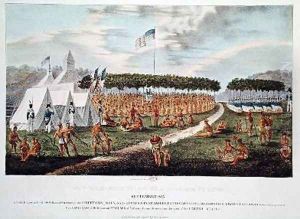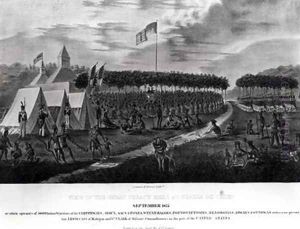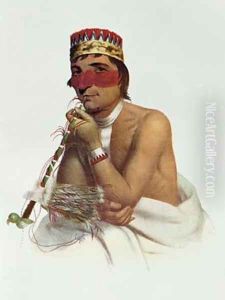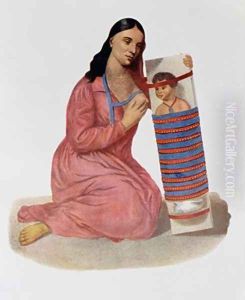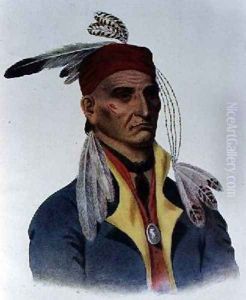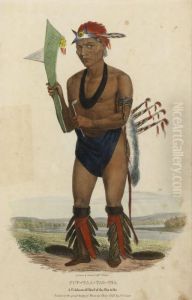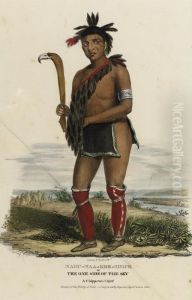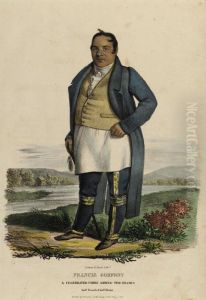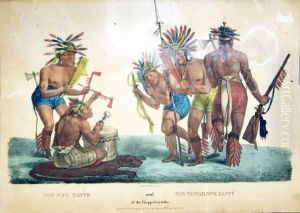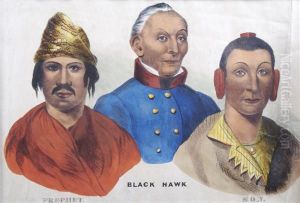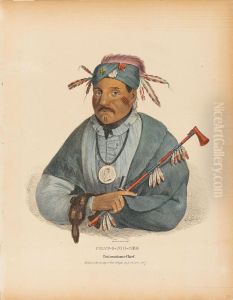James Otto Lewis Paintings
James Otto Lewis was an American painter and lithographer who is best known for his documentation of Native American leaders and culture in the early 19th century. Born in 1799, Lewis's early life details are somewhat obscure, but he emerged as a significant figure in American art history due to his involvement with the Indian Treaty Scenes.
Lewis's most notable work was his extensive collection of portraits and scenes related to Native American delegations visiting Washington, D.C., for treaty negotiations. His efforts were part of a larger project, initiated around 1825, to create an 'Indian Gallery' that aimed to capture the likenesses and cultures of the indigenous peoples of North America before they were irrevocably changed by European settlement.
Despite his dedication to documenting Native American leaders, Lewis's work has been overshadowed by contemporaries such as George Catlin and Karl Bodmer, who undertook similar projects. One reason for this may be the controversy surrounding the authenticity and accuracy of some of Lewis's depictions. Critics have noted that while Lewis had direct access to his subjects, some of his works may have been embellished or drawn from memory, leading to questions about their reliability as historical documents.
Lewis's most ambitious project was 'The Aboriginal Portfolio', published in 1835-1836, which contained lithographs of his watercolors of Native American scenes and portraits. Unfortunately, this project did not achieve the success Lewis had hoped for, and he faced financial difficulties for much of his life.
Throughout his career, Lewis traveled extensively in the American frontier, sketching and painting Native American life, landscapes, and treaty signings. His works provide a valuable, if sometimes contested, record of a pivotal time in American history when the fates of the United States and Native American nations were closely intertwined.
James Otto Lewis died in 1858. Despite the controversies surrounding some of his work, his contributions to the visual history of Native American peoples and the early American frontier remain significant. His art offers insights not only into the subjects he portrayed but also into the complex dynamics of representation, cultural exchange, and historical memory in early American art.
